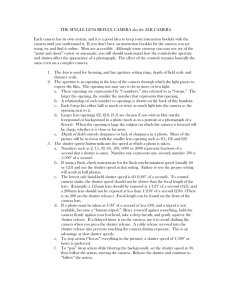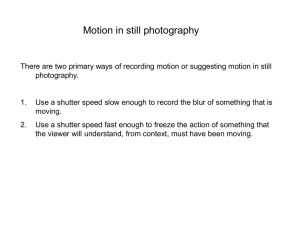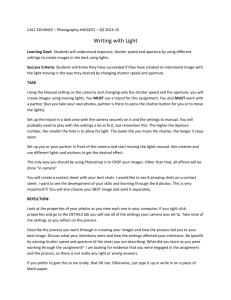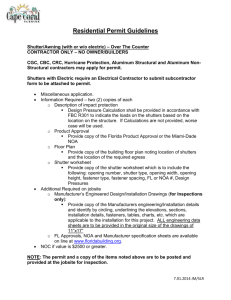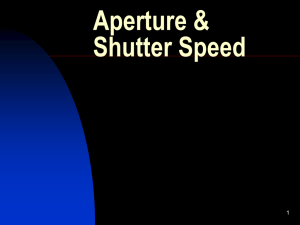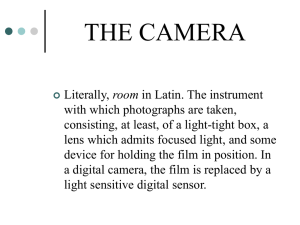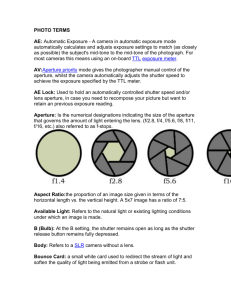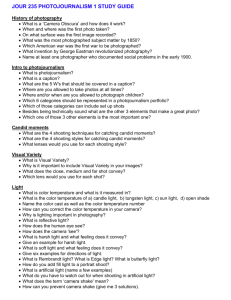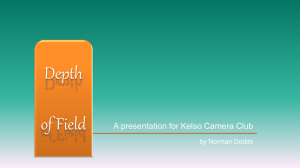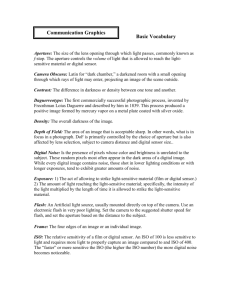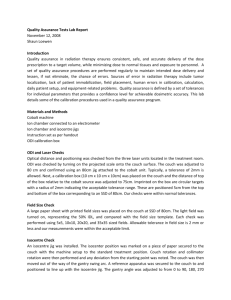(ln(x), ln(y)) - Village Christian School
advertisement
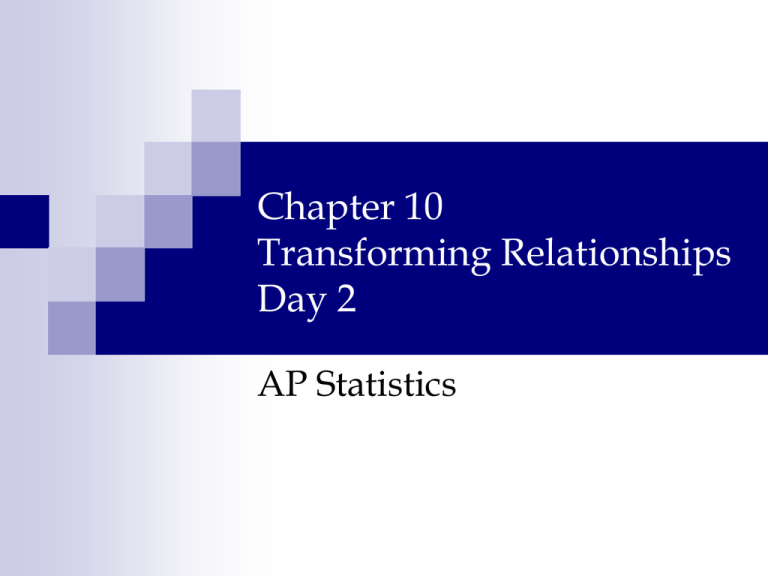
Chapter 10 Transforming Relationships Day 2 AP Statistics The Ladder of Power Let’s examine the “0” rung of the ladder a little more closely: POWER (x, ln(y)) Comment This is very useful if the values of y increases by a percentage. (ln(x), y) When x has a wide range or when the scatterplot descends rapidly to the left and levels off to the right (ln(x), ln(y)) When one of the ladder powers is too big and the other one is too small, this is often a useful transformation. Also, if the scatterplot is thickening, this transformation can be very useful. 2 Non-Linear Regression Let’s examine the relationship between shutter speed and f/stops of a particular camera lens: Shutter speed f/stop Shutter speed f/stop 1/1000 2.8 1/60 11 1/500 4 1/30 16 1/250 5.6 1/15 22 1/125 8 1/8 32 3 Non-Linear Regression Store the ln(F-stop) and ln(shutter speed) into L5 and L8, respectively: POWER (x, y) =(speed, f/stop) (x, ln(y)) =(speed, ln(f/stop)) (ln(x), y) =(ln(speed), f/stop) (ln(x), ln(y)) =(ln(speed), ln(f/stop)) 4 Non-Linear Regression Let’s examine the relationship between shutter speed and f/stops of a particular camera lens: No! Curved No! Curved No! Curved YES! Linear 5 Non-Linear Regression Let’s examine the relationship between shutter speed and f/stops of a particular camera lens: Although the data looks linear, it’s still possible that it is actually curved. We need to check if this data is actually linear or just appears to be linear. • Let’s perform a residual plot on this data. 6 Non-Linear Regression Let’s examine the relationship between shutter speed and f/stops of a particular camera lens: The points appear to have a random spread about the MODIFIED LSRL line. So, this seems to be a good model to the data - although it may have increasing spread. Be careful when determining the actual LSRL line. 7 Non-Linear Regression Let’s examine the relationship between shutter speed and f/stops of a particular camera lens: The following is the modified equation: ln( Fˆ stop ) 4 . 464 0 . 497 ln( shutter speed ) However, in the calculator we have the following: yˆ 4 . 464 0 . 497 x Take the first equation and solve for y-hat; this is the true modified equation of the LSRL: Fˆ stop e ( 4 .464 0 .497 ln( shutter speed) ) or Fˆ stop e^ ( 4 . 646 0 . 497 ln( shutter speed) ) 8 Non-Linear Regression Let’s examine the relationship between shutter speed and f/stops of a particular camera lens: Let’s make sure that our new equation fits the original data: Graph it: It looks pretty good. See if you can determine the f/stop for a shutter speed of ¼ . Y1(1/4) = 43.612 9 Transformations Type of Model Transformation New Model Re-expressed Model Exponential ( x , y ) ( x , ln( y )) ln yˆ a bx a bx yˆ e Logarithmic ( x , y ) (ln( x ), y ) yˆ a b ln( x ) yˆ a b ln( x ) Power ( x , y ) (ln( x ), ln( y )) ln yˆ a b ln( x ) a b ln( x ) yˆ e 10 Can’t We Just Use the Curve? Although your calculator will do other types of regression (quadratic, exponential, etc.), using the curve has drawbacks. • • First, lines are easy to understand. Using the curve, throws out all of our understanding of linear regression. We understand how to interpret the slope and the y-intercept, and linear models are more useful in advanced statistical practices. In order to use the curve, we would have to come up with a whole new system of understanding. It’s best to use the linear model. 11 Assignment Chapter 10 Lesson: Read: Re-Expressing Data No new reading Problems: Ch 10 Practice Quiz Unit 2 Practice Test 12
